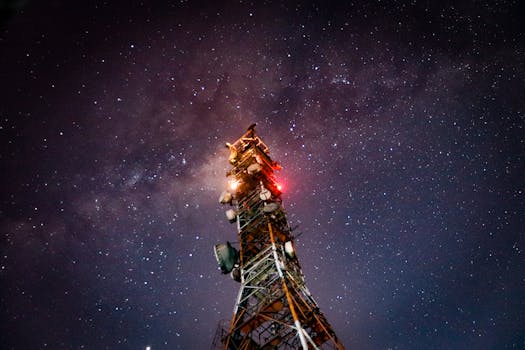
Starlink: Revolutionizing Global Connectivity with Satellite Internet
Starlink is a satellite constellation developed by SpaceX, aiming to provide high-speed, low-latency internet connectivity worldwide, bridging the digital divide and revolutionizing the way we communicate. With its cutting-edge technology and ambitious goals, Starlink is poised to change the face of global connectivity, making it possible for people in remote and underserved areas to access the internet and all its benefits.
Introduction to Starlink
Starlink is a constellation of low-Earth orbit (LEO) satellites, designed and launched by SpaceX, a private aerospace manufacturer and space transport services company founded by Elon Musk. The project was announced in 2015, with the goal of providing fast, reliable, and global internet coverage. The first batch of Starlink satellites was launched in May 2019, and since then, numerous launches have taken place, with thousands of satellites already in orbit.
The Starlink system is designed to provide a wide range of services, including internet connectivity, voice and video communications, and even backhaul services for mobile networks. The satellites are equipped with advanced technology, including Hall effect thrusters, navigation systems, and high-gain antennas, allowing them to maintain precise orbits and provide high-quality connectivity.
How Starlink Works
Starlink uses a complex system of satellites, ground stations, and user terminals to provide internet connectivity. The satellites are launched into LEO, approximately 550 kilometers above the Earth’s surface, and are designed to provide coverage to a specific area on the ground. The satellites communicate with user terminals, which are small, dish-like antennas that can be installed at homes, businesses, or other locations.
The user terminals use advanced beamforming technology to communicate with the satellites, allowing for high-speed data transfer and low latency. The satellites, in turn, communicate with ground stations, which are responsible for connecting the Starlink network to the broader internet. The ground stations use high-gain antennas to communicate with the satellites, ensuring reliable and efficient data transfer.
One of the key advantages of Starlink is its use of LEO satellites, which provides several benefits, including lower latency, higher speeds, and improved reliability compared to traditional geostationary satellites. Additionally, the Starlink system is designed to be highly scalable, with the ability to add more satellites and ground stations as demand increases.
Benefits and Impact of Starlink
Starlink has the potential to revolutionize global connectivity, providing a wide range of benefits and opportunities for individuals, businesses, and communities. Some of the key benefits of Starlink include:
Global coverage: Starlink provides internet connectivity to remote and underserved areas, bridging the digital divide and providing access to information, education, and economic opportunities. High-speed connectivity: Starlink offers fast and reliable internet speeds, making it possible for people to stream video, use online applications, and communicate with others in real-time. Low latency: The use of LEO satellites and advanced technology ensures low latency, making it possible for people to use real-time applications, such as video conferencing and online gaming. Cost-effective: Starlink has the potential to be more cost-effective than traditional satellite internet services, making it possible for people in remote and underserved areas to access the internet at an affordable price.
The impact of Starlink will be felt across a wide range of industries and communities, from education and healthcare to finance and commerce. With Starlink, people in remote and underserved areas will have access to the same opportunities and resources as those in urban areas, helping to bridge the digital divide and promote economic development.
Challenges and Future Developments
While Starlink has the potential to revolutionize global connectivity, there are also several challenges and limitations that need to be addressed. Some of the key challenges include:
Regulatory issues: Starlink needs to comply with regulatory requirements in different countries and regions, which can be complex and time-consuming. Interference: The use of LEO satellites and advanced technology can cause interference with other satellite systems and wireless networks, which needs to be mitigated. Cost: While Starlink has the potential to be more cost-effective than traditional satellite internet services, the cost of user terminals and subscription fees may still be out of reach for some people. Security: The use of satellite internet and advanced technology raises security concerns, such as hacking and data breaches, which need to be addressed.
Despite these challenges, Starlink is continuously evolving and improving, with new technologies and innovations being developed to address these issues. Some of the future developments include the use of advanced materials and technologies, such as quantum computing and artificial intelligence, to improve the performance and efficiency of the Starlink system.

